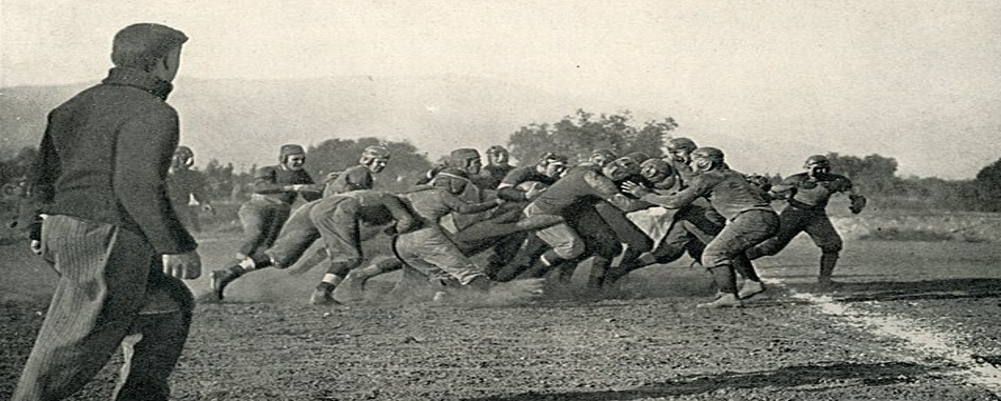Of course, this story is based on Tim's Factoid Feast Tidbit I in a section called Iowa's Passing Fancy.
We also have an audio-only podcast on the topic found at: The Evolution of Football Helmets: A Colorful History.
Throughout the episode, listeners gain insight into the cultural and strategic transformations in football as the sport evolved from leather helmets to the more modern iterations we see today. The hosts delve into the challenges of maintaining painted leather helmets, discussing the durability of paint and the practicalities of upkeep, which were as complex as the game itself. This thoughtful examination highlights the intersection of sports and psychology, illustrating how something as seemingly simple as helmet color can have a profound impact on gameplay and perception in American football.
Listeners are invited to explore more of Timothy's work at footballarcheology.com, where he offers a treasure trove of stories that celebrate the rich history of football, showcasing how these narratives contribute to our understanding of the game's evolution over time.
The podcast takes a deep dive into the fascinating story of how helmet colors in football came to be, with a particular focus on the Iowa team in 1925. Darren Hayes and guest Timothy P. Brown engage in a lively dialogue that spans the practical implications of helmet design and the quirky historical anecdotes surrounding it. The discussion reveals that the act of painting helmets was not merely an aesthetic choice but was rooted in the strategic needs of the game—specifically, the need to distinguish players during the chaotic action of a match. Brown elaborates on the origins of painted helmets, highlighting how one of the first instances of this practice was motivated by the need to enhance visibility for quarterbacks attempting forward passes. The episode cleverly juxtaposes these historical insights with modern perceptions of the game, drawing parallels between past and present approaches to player visibility and safety.
Moreover, the conversation also touches on the bizarre claims made by Iowa’s psychology department, asserting that their helmet design was “psychologically perfect.” Brown humorously critiques the validity of such claims, suggesting that the supposed scientific rationale may not have held up under scrutiny. This blend of humor and historical analysis not only entertains but also provides listeners with a richer understanding of the complexities involved in the evolution of football equipment.
The episode also serves as a reminder of the often-overlooked details that shape the sport we know today, encouraging fans to appreciate the history and innovation behind every aspect of the game. For those curious to learn more about the intersection of psychology, design, and sports history, Brown's insights are invaluable and can be explored further at footballarcheology.com, where he archives many of these fascinating stories.
Listeners are treated to a unique exploration of football history, specifically the evolution of helmet colors, in this engaging podcast episode featuring Darren Hayes and Timothy P. Brown. The discussion centers on the Iowa football team of 1925, one of the pioneers in the use of painted helmets, which were intended to improve visibility for players on the field, particularly the quarterbacks looking to pass. Brown provides a detailed narrative about how painting helmets became a strategic innovation in football, illustrating how the sport has continuously adapted to improve gameplay and player safety.
As the conversation unfolds, the hosts explore the quirky history surrounding the psychological claims made about helmet designs by Iowa's psychology department, leading to a humorous yet critical examination of the relationship between sports, psychology, and design. Brown's insights into the challenges of maintaining painted leather helmets during inclement weather add depth to the discussion, emphasizing the practical considerations that teams faced in the early days of football. This historical context enriches the listener's appreciation for the game, showcasing how even small changes, such as helmet color, can have significant implications for strategy and player interaction on the field.
The episode paints a vivid picture of the early football landscape, filled with unique stories and facts that highlight the sport's evolution. Listeners are encouraged to visit footballarcheology.com, where Brown curates a collection of historical narratives and insights that celebrate the rich tapestry of football history, ensuring that the legacy of the game continues to inspire future generations.



